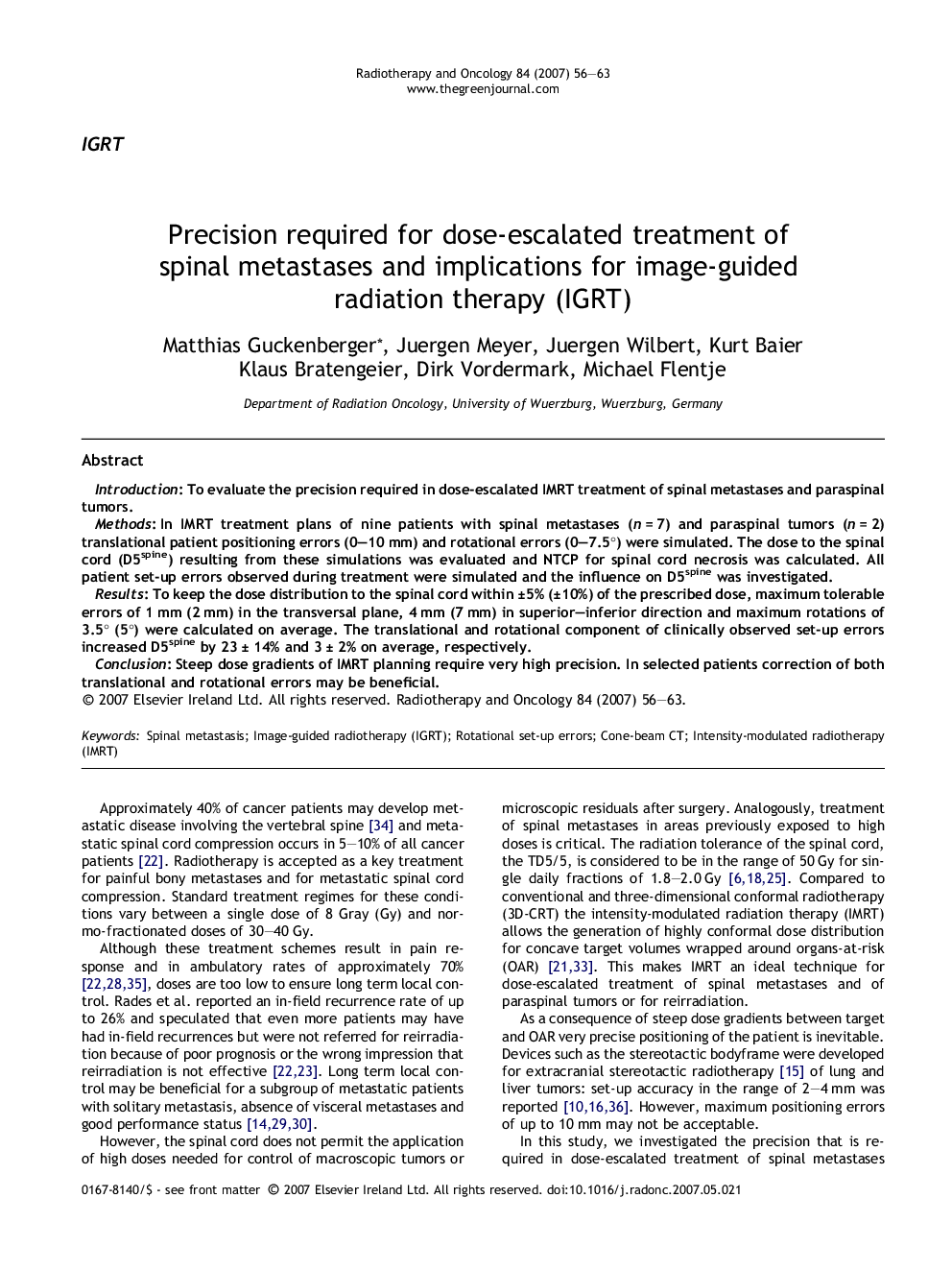| Article ID | Journal | Published Year | Pages | File Type |
|---|---|---|---|---|
| 2160328 | Radiotherapy and Oncology | 2007 | 8 Pages |
IntroductionTo evaluate the precision required in dose-escalated IMRT treatment of spinal metastases and paraspinal tumors.MethodsIn IMRT treatment plans of nine patients with spinal metastases (n = 7) and paraspinal tumors (n = 2) translational patient positioning errors (0–10 mm) and rotational errors (0–7.5°) were simulated. The dose to the spinal cord (D5spine) resulting from these simulations was evaluated and NTCP for spinal cord necrosis was calculated. All patient set-up errors observed during treatment were simulated and the influence on D5spine was investigated.ResultsTo keep the dose distribution to the spinal cord within ±5% (±10%) of the prescribed dose, maximum tolerable errors of 1 mm (2 mm) in the transversal plane, 4 mm (7 mm) in superior–inferior direction and maximum rotations of 3.5° (5°) were calculated on average. The translational and rotational component of clinically observed set-up errors increased D5spine by 23 ± 14% and 3 ± 2% on average, respectively.ConclusionSteep dose gradients of IMRT planning require very high precision. In selected patients correction of both translational and rotational errors may be beneficial.
